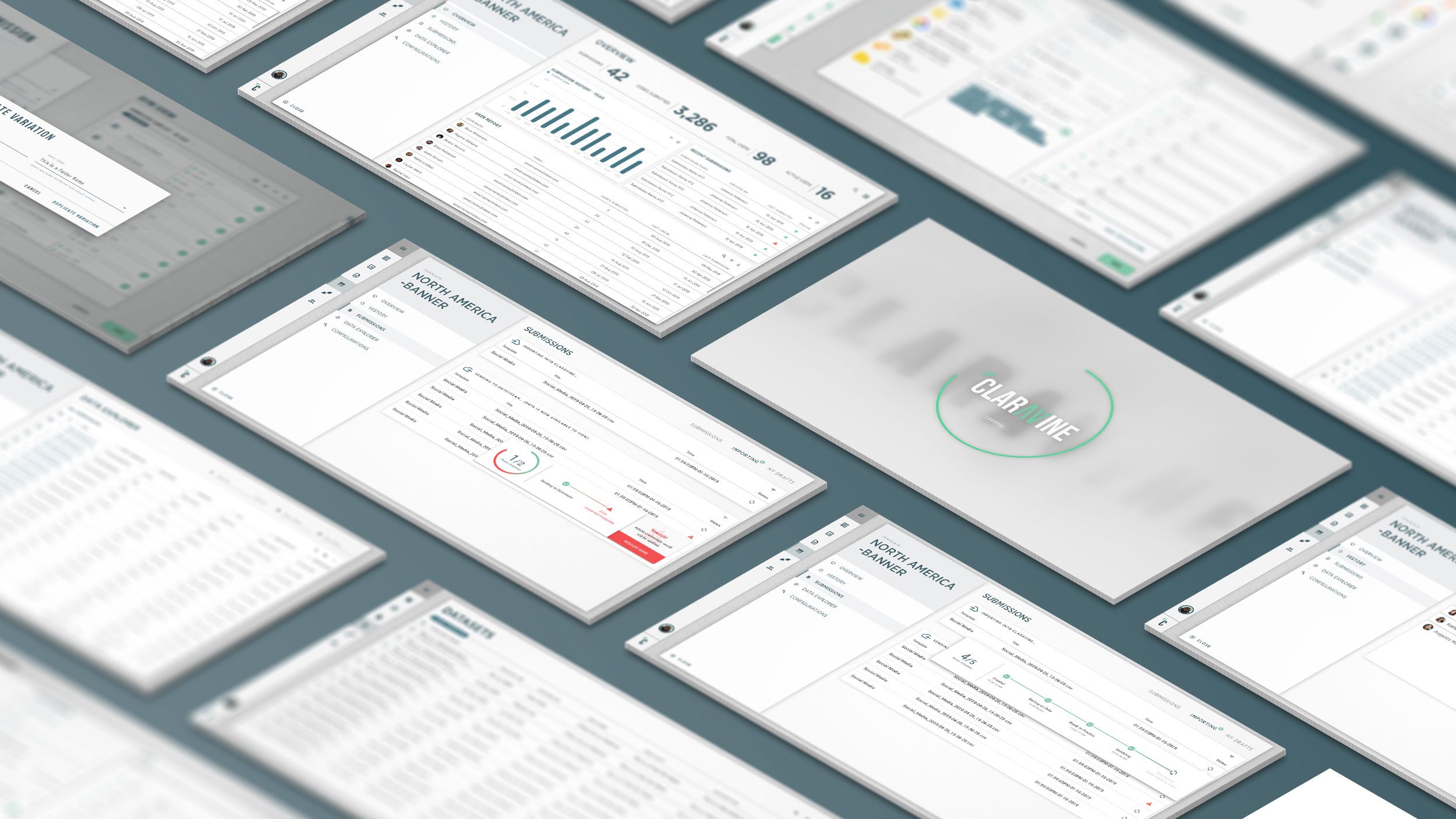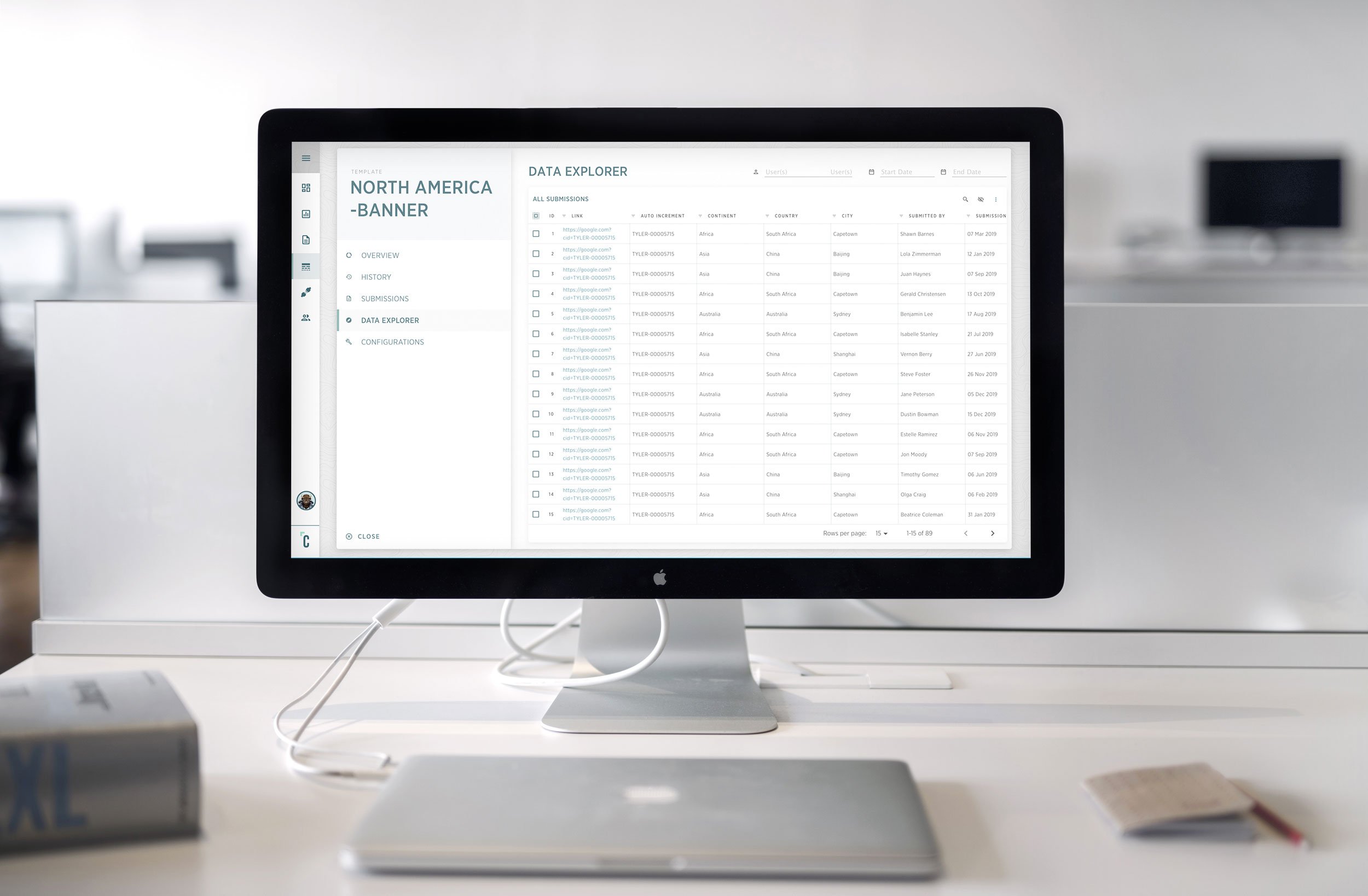
UX/UI, PRODUCT DESIGN, BRANDING
CLARAVINE
The Challenge
The increasing dispersion of marketing tools and teams generating tracking often leads to digital experience data that is inconsistent and highly inaccurate. This lack of effective tracking can lead to misspent advertising and limited visibility into the actual drivers of campaign performance.
The need was for a tool that standardized the taxonomy, creation of a governed process, and be able to validate campaign readiness.
CLIENT
ROLE
TECHNOLOGY
Claravine
Lead Product Designer
Sketch, Invision, Lucid Charts

Discovery
Discover and research to define user scenarios and workflows
Wireframe
Use Cases, Work flow(s), Site Map, Wireframing, Major Interactions
Prototype
Visual design, Style Guide, Screen Mockup’s, Interaction
Validate
Get quick and often feedback from stakeholders and team members
Test
Meet and test actual users and observe user interactions and record results
SUMMARIZE
Validate and learn from users’ behaviors. Analyze user feedback and results from testing. Iterate as needed
PROCESS AT A GLANCE
The Solution.
The software that Claravine had already built (Tracking First) worked but had problems that began to show as the customer base grew. Because of this, it opened up the discussions for the need of UX.
I was brought on the team to establish a UX process (they had not ever had a UX designer or a designer outside of a 3rd party agency). The UX process included everything from introducing design thinking, creating a design system, establishing the tools for designing and testing, and getting UX a seat at the table.
After establishing and defining a UX process I then got to work on solving the issues.
I started by reaching out to key customers and collecting exhaustive feedback on how they were using the tool. I wanted to know how they work, and what their pain points were both with their jobs and the tool itself. Next, I created user flows and journey maps that represented the data I had collected so far.
I met daily with BA’s, product owners, dev’s and other stakeholders to determine needs, and technical constraints, and to review progress. From these meetings, I created wireframes and iterated based on test results and stakeholder input.
Core Issue: Human Error
After identifying a few core problems, the biggest issue we found was that there was a huge problem with consistency in how campaigns and tracking were created. We were able to identify that a large proportion of digital media spend – 40-60% – was tracked ineffectively because of a simple thing such as human error. We knew we needed to remove as much of that as possible by automating huge parts of the process.
Manual Process
We identified some common roadblocks to effective media analytics. We also outlined which elements of the campaign process most often lead to tracking errors, and suggest key steps to avoid those mistakes through automation.
Those details get exported into a trafficking sheet based in Excel. Teams or agencies populate the data fields for each ad variation within this sheet. Populating traffic sheets is a painstaking process, and human error at key points can compound data quality issues at the end of the campaign.
Some issues we identified were:
Mistakes during data entry create inconsistent tracking codes and landing page URLs
Inconsistent codes and URLs don’t capture necessary metadata
The volume of lines for each ad iteration complicates data quality checks
Loss of valuable meta-data disrupts campaigns views downstream
Depending on the size of a campaign, a traffic sheet may include hundreds or thousands of lines for each ad iteration, multiplying the challenge of manual checks and validation.
Automated Process
The major weakness of a typical media campaign process is, ultimately, the margin for error allowed by the large volume of manual data entry across teams and platforms. In order to eliminate those errors and ensure the veracity of media data, the source of the data has to be governed.
After populating a trafficking sheet, a governance platform can:
Ingests, validate, and standardize metadata
Confirm that tags, codes, and pages are ready
Append missing data
Bulk export metadata to demand-side platforms (DSPs) with the required structure
Centrally manage changes to and consistency of taxonomies
Addressing the manual elements of the media campaign process with automation expedites the launch of digital experiences and ensures granular, correct data for analysis.
“Claravine is a fantastic solution that accelerates the process of getting sound campaign tracking reports up and running. The intuitive and user-friendly interface quickly reduces errors and enhances the workflow around multi-campaign tracking. We recommend it to all our clients!”
Original DesignFinal Design
Desktop - New Template







